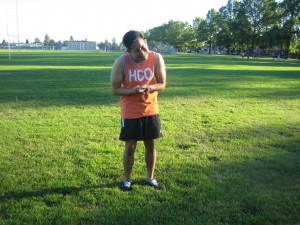A ganglion cyst is a non-cancerous lump that usually develop along the tendons and joints of the hands and wrists. They can also form in the ankles and feet.
The cysts are round and oval and filled with a jelly-like fluid. A small ganglion is about the size of a pea while a large cyst is about 2.5 centimeters in diameter. It causes pain if they press on a nerve and sometimes interferes with movements of the joint. Women are more susceptible to this condition between 20-40 years old and suffering from osteoarthritis in the joints of the finger.
Symptoms

- The cysts usually develop along the tendons or joints of the wrists and hands. They can also develop on the ankles and feet.
- The cysts changes in size when using the affected joint for repetitive movements.
- When the cyst presses a nerve, it causes pain, numbness, tingling and weakness of the muscles.
Causes
- A ganglion cyst form when there is fluid build up in a joint or around the tendon in the hands, wrist, ankle and foot.
- The build up of fluid can be caused by trauma, injury and overuse.
Treatment for a ganglion cyst
- Apply a warm compress on the ganglion cyst. Soak a clean washcloth in warm water, wring out the excess water and put the cloth directly on the cyst for at least 5-10 minutes at 3-4 times every day until it disappears. The warmth promotes drainage of fluid, proper blood circulation and lessens the pain and swelling.
- Provide the prescribed over-the-counter pain medication such as naproxen or ibuprofen to reduce the discomfort and swelling.
- Avoid draining the cysts on your own to prevent further injury
- In 2 cups of warm water, mix 1 tablespoon of Epsom salt until totally dissolved. Soak the affected area for at least 20-30 minutes every day for several days. Epsom salt has wound healing properties that reduce and heal the cysts in a few days. It also lessens the inflammation and pain.
- Massage the affected area by gently rubbing the ganglion cyst frequently throughout the day to lessen the symptoms of the condition.
- Seek the guidance of the physical therapist for suitable rehabilitation workouts to strengthen the affected areas and restore range of movement.
Tips
- If a ganglion cyst develops in the hand and wrist, avoid repetitive movements and wear a wrist brace to reduce the size of the cysts.
- If the cysts are on the foot or ankle, avoid wearing shoes that touches the affected area
